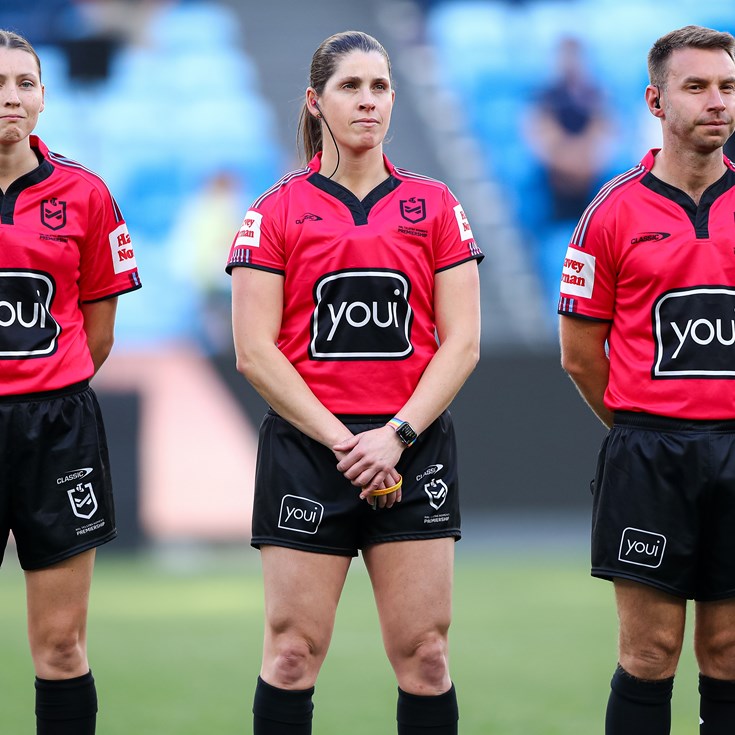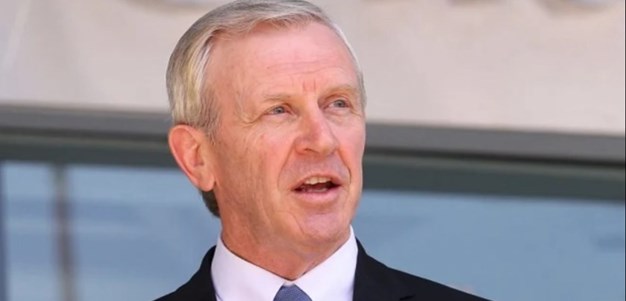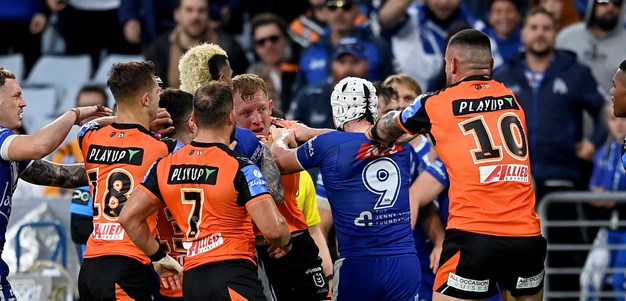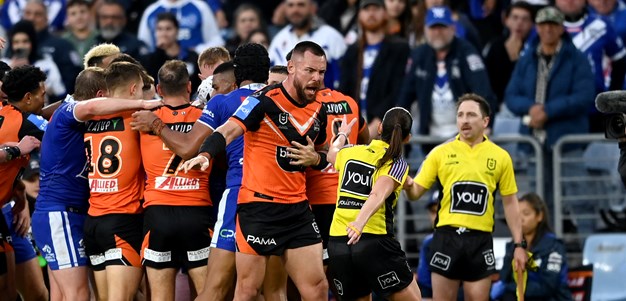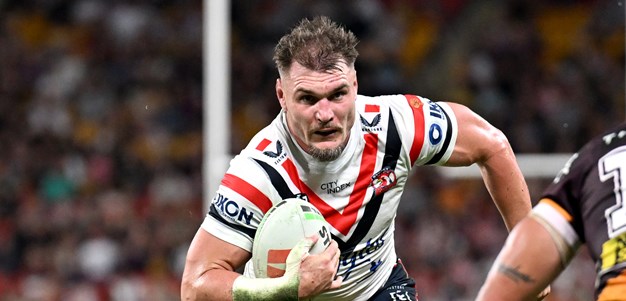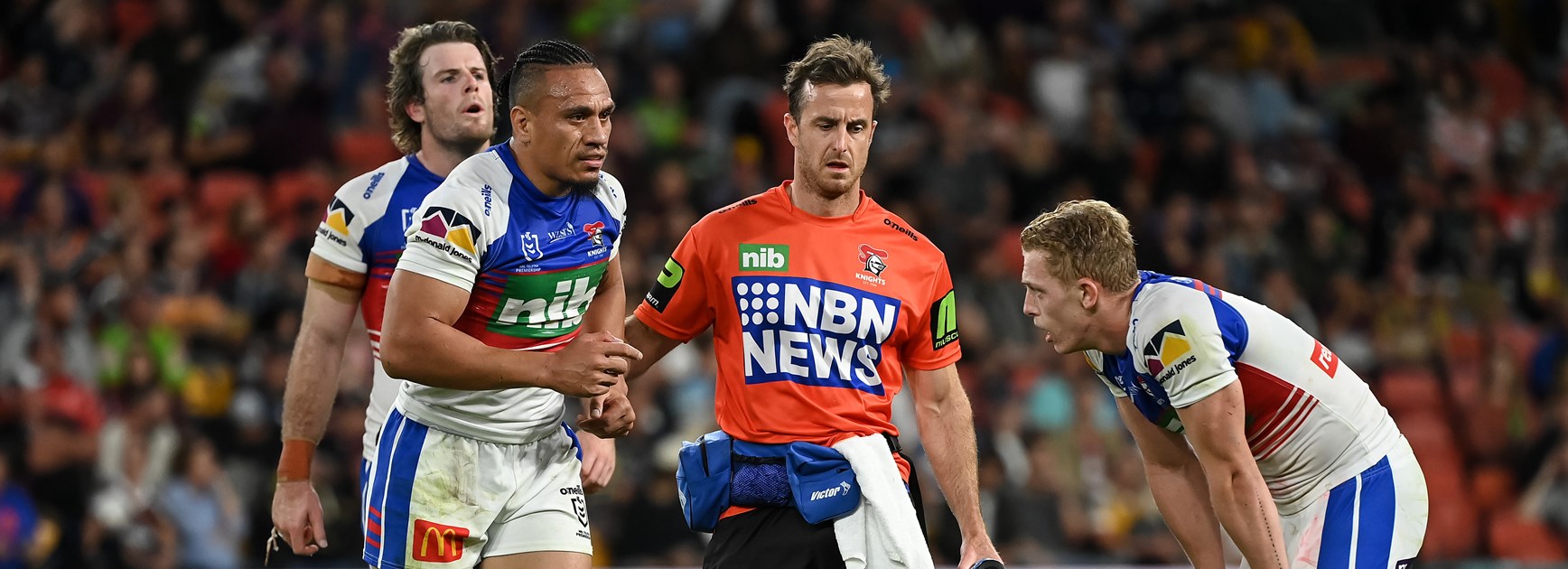
Graham Annesley has refuted claims the new rules have indirectly caused more high tackles through fatigue, releasing data to support his stance.
The NRL on Thursday released a range of statistics aimed at proving that fatigue has not markedly increased due to rule changes designed to speed up the game.
Annesley said on Thursday he was happy to have a debate about the impact of the new rules but the NRL head of football said the figures showed players were running fewer metres compared to last season, getting more breaks in play due to an increase in tries while the overall error rate has remained flat for the past three years.
An alarming rise in head and neck contact has culminated in referees being instructed to more frequently use sin bins and send-offs.
"There's been a degree of speculation publicly that what we're seeing happening on the field in terms of contact with the head and neck is purely a result of rule changes and the impact that rule changes have had on the game," Annesley told NRL.com.
"I think what the statistics show is that while we're not saying there aren't multiple factors that can play into these sorts of things, trying to blame it all on rule changes just isn't supported by the data.
Was this the crackdown the NRL had to have?
"People are saying that fatigue is up and fatigue is caused by the rule changes. We're saying we don't see that in the data.
"People can speculate and people can obviously form their own opinions, but opinions aren't necessarily based on fact.
"What we're trying to do is put some balance into the debate to say that fatigue, on the information that we have available to us, is not too much different over recent years."
Graham Annesley weekly football briefing - Round 10
Annesley said all clubs had access to the statistics.
"These things will be hotly debated and people are entitled to have personal opinions," Annesley added.
"We're not trying to shut anyone down ... If we're going to have a public debate about it, let's put some facts in the arena."
A record 24 charges were laid by the match review committee in Magic Round, but Annesley has pointed out that 16 players "spent less than 40 minutes on the field before they committed their offence".
Rule change effects by the numbers
Average errors per game
The average number of errors per match has stayed consistent across the past three seasons despite the introduction of the six-again infringement rule in round three of 2020.
- 2021: 22
- 2020: 22
- 2019: 21
The evolution of Nathan Cleary
Ball-in-play time
While the six-again rule was expanded to include 10-metre infringements in 2021, ball-in-play time per match has dropped by 54 seconds from last year.
- 2021: 55min 18secs
- 2020: 56min 12secs
- 2019: 54min 48secs
Average ball in play time before stoppage
The average "live time" when the ball is in play prior to a stoppage hasn't changed from last season.
- 2021: 62 seconds
- 2020: 62 seconds
- 2019: 57 seconds
Every try from Magic Round
Tries per game
Compared to 2019, on average one extra try is being scored per match in 2021. There's been a slight increase on last season, allowing players more breaks as they regroup for a resulting kick-off.
- 2021: 7.7
- 2020: 7.3
- 2019: 6.6
Play-the-balls
A decrease in play-the-balls per match from 2020 implies a "slightly less tackle count year on year", according to the NRL data.
- 2021: 284
- 2020: 288
- 2019: 270
Taumalolo backs Tonga to challenge for the RLWC
Average total distance per player
While some elite talents like Nathan Cleary can cover more than 10km per match, on average players are running less distance in 2021 than in the previous two years, including under old rules in 2019.
- 2021: 6600m
- 2020: 7180m
- 2019: 6626m
Average metres covered at more than 20km/h
Players may be covering fewer metres per game but they're doing it faster, with the average number of high-speed metres (more than 20km/h) jumping by 22 per player compared to 2020.
- 2021: 299
- 2020: 277
- 2019: 255
The NRL statement said it would "continue to meticulously monitor the data and if there is a negative trend we will address it.
"Player welfare is our absolute priority and if there were any signs that fatigue was having a negative impact, we would act immediately."
The Rugby League Players’ Association (RLPA) said in a statement it noted the release of season-to-date statistics.
"The RLPA is adamant that prior to making any definitive statements concerning the playing environment, all information must be thoroughly tested and scrutinised," the statement read.
